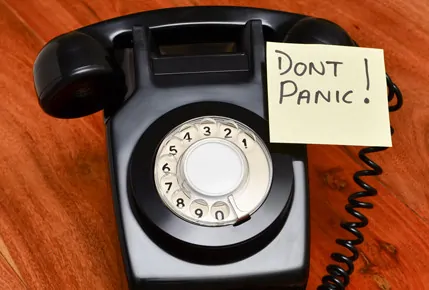Your Genesys Blog Subscription has been confirmed!
Please add genesys@email.genesys.com to your safe sender list to ensure you receive the weekly blog notifications.
Subscribe to our free newsletter and get blog updates in your inbox
Don't Show This Again.

There are few things that customers dislike more than having to wait on hold for service. Besides being subjected to the irritating music and repetitive messages, it’s wasted time that is never regained. How much time? One study found that U.S. consumers spend on average 13 hours each year on hold. This explains why, in a 2015 Accenture survey of over 12,000 consumers, long hold times was ranked one of the two biggest customer service gripes.
With the customer experience more important than ever, underestimating the impact of hold times can be a very costly mistake. In that same Accenture survey, more than half of the consumers reported taking their business elsewhere because of poor customer service. With the cost of customer acquisition continuing to climb, can any business afford to risk losing customers because of the correctable problem of long hold times?
Why You Don’t Want to Be Average
Currently, the average hold time for all businesses is about 56 seconds. Yet, research indicates that 15% of callers will hang up after approximately 40 seconds on hold. As this time continues, the number of customers dropping off grows substantially. By the time customers have reached the one minute mark on hold, more than 60% will have abandoned the call. It has also been found that more than one-third of these callers who hang up will never call back again. These startling statistics should encourage every business to ask what they can do to handle customer service calls more efficiently.
5 Ways to Overcome the Challenge
Of course, the optimal wait time for customers is no wait time. While this may be impossible to achieve, there are effective strategies to decrease the amount of time customers are holding.
1. Pinpoint Lags in Service Quality
Before you can address any problem, it’s important to determine its sources. This is certainly true when it comes to hold times. Analyze your metrics to find out when hold times are the worst. Look at abandoned call data to determine if customers are hanging up during these times. When you can begin to narrow down the when and why of your on-hold challenges, you can start to create solutions for fixing them.
2. Minimize the Reasons for Calls
Are customers repeatedly calling with basic questions that could be answered by self-serving on your website or listening to an IVR recording? Step back and look at the broader customer experience to ensure everything is optimized. Up-to-date information on your website, social media channels, and print collateral can help to answer common customer questions and reduce the volume of incoming calls. An updated IVR greeting and on-hold message with key information that is commonly asked can provide the answers that callers are seeking and prevent the need for some calls to be routed to agents.
3. Offer a Callback as an Alternative
Reduce customer frustration and effort by offering callback as a path from self to assisted service. Callback enables your customers across web, mobile, and IVR touchpoints to – with a click or IVR selection – schedule a callback from an agent at a convenient time for them or request one immediately. Callback greatly reduces hold times by increasing overall contact center efficiencies, such as improving the first call resolution rate, average speed to answer, reducing the call transfer rate, the abandonment rate and decreasing the average handle time of each call.
4. Improve Self-Service Options
Customers are increasingly preferring self-service over assisted-service. This reality is an indicator that it may be time to upgrade self-service channels and the technologies that support them, including your IVR solution. With more callers choosing these channels, you’ll not only decrease your call volumes and hold times, you’ll also reduce your operating costs.
5. Optimize Staffing
Perhaps, the most obvious way to decrease hold times is to have the right number of people to handle the call volume. This isn’t always easy to accomplish when you have many peaks and lulls. By using intelligent call center workforce management, you can better understand these variances so that you can have the staff on hand to cover peak periods while still being able to maintain solid adherence rates. Also by allowing customers to schedule a callback it enhances the ability of existing staff to manage peak call volumes by shifting return calls to non-peak times.
Ready to Get Started?
In a perfect world, you could snap your fingers and make long hold times disappear. Unfortunately, it does take planning and effort to improve this vitally important aspect of your customer experience. The first step is evaluating your systems, channels, and procedures to determine where you can begin making upgrades and improvements.
To better understand your customer’s needs and what you can do to provide the service they now expect, read The Contact Center Manager’s Survival Guide to Omnichannel Customer Service. In it, you’ll find valuable ideas for reducing hold times and delivering a superior customer experience.
Subscribe to our free newsletter and get blog updates in your inbox.